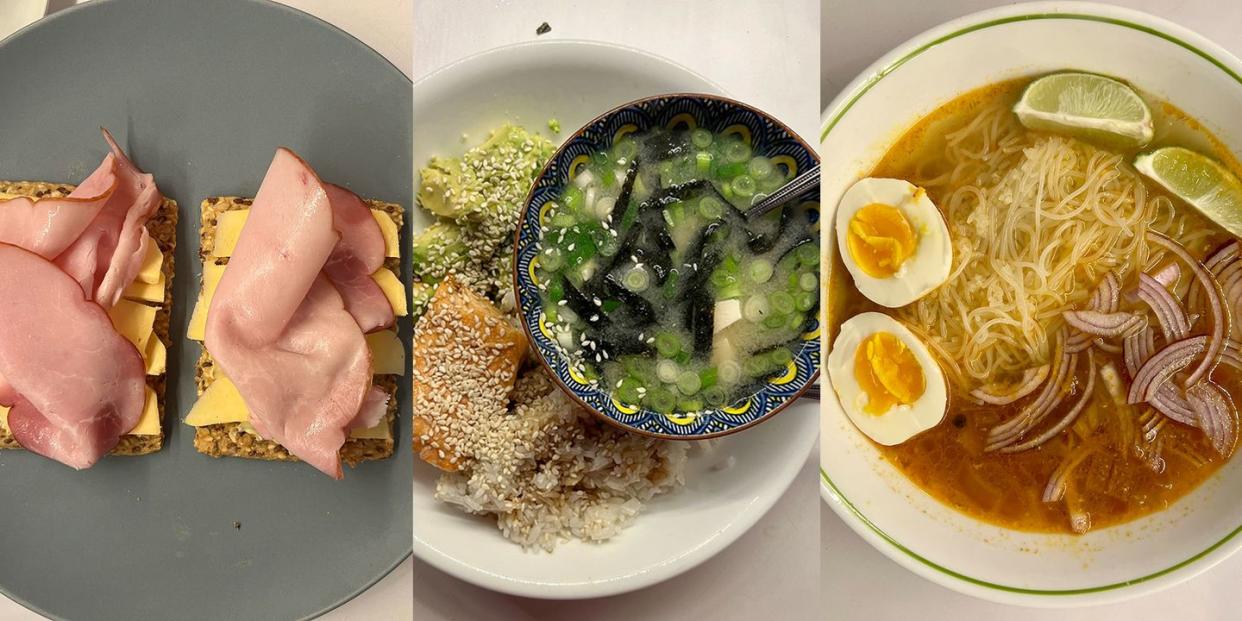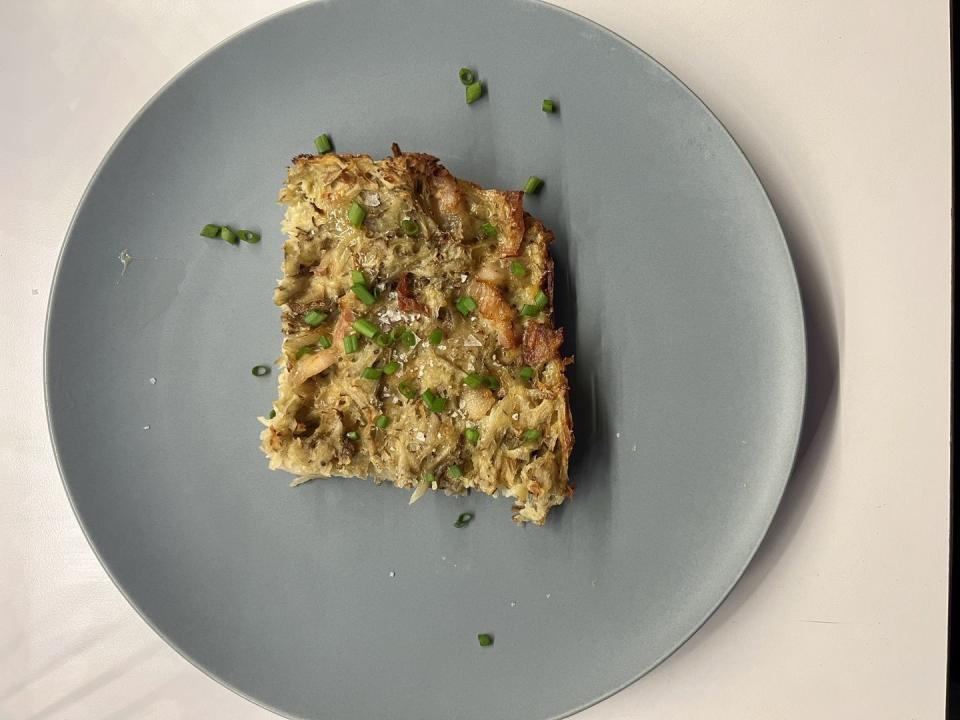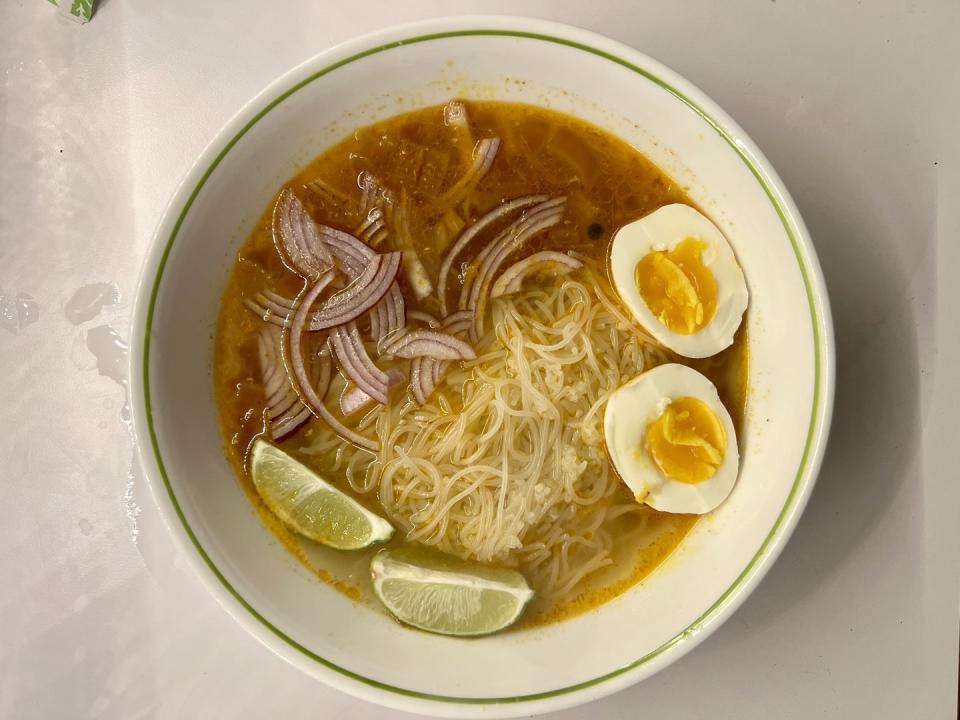I Used To Hate Breakfast—Until I Did This

Very few things in this world get me to pop out of bed in the morning like the aroma of sizzling bacon. It brings me right back to my childhood when Sunday morning meant a griddle frying up over-easy eggs with runny yolks later sopped up with white buttered toast. Compared to my normal weekday breakfast at the time of sugary cereal drowned in milk and quickly scarfed down before jetting off to the bus stop around sunrise, I loved the savory, take-my-time breakfast of the weekend.
Growing up, I felt like breakfast had to fall into one of those two categories—savory and slow, or fast and sweet. In the late 90s and early 2000s, breakfast was all about cereal, cereal, cereal. It was “part of a complete and balanced breakfast,” or so the commercials drilled into my head. And so, like every other kid of the time, that’s what I ate. I didn’t particularly like it, as I have never had much of a sweet tooth, but I ate it.
But American breakfast wasn’t always this way. Before the 20th century, breakfast was a big meal of meats like corned beef hash or steak and eggs, particularly for laborers who needed sustenance before spending the day working. When improvements in wheat production in the mid-19th century made the grain more easily accessible, U.S. breakfasts started to include things like pancakes and cooked wheat cereals that were mixed with sugar and milk.
“Then, John Harvey Kellogg comes in, and we get the flaked cold breakfast cereals,” food historian Sarah Wassberg Johnson told me. Yep, Kellogg, as in the maker of Frosted Flakes, Froot Loops, Rice Krispies, Apple Jacks, Raisin Bran, and so many more. These types of cereals came about post-World War II, when rations on sugar were lifted, and the U.S. saw a boom in sugary products, including breakfast items.
Combine the popularity of cereal with other typical American breakfast foods like frozen waffles, Pop-Tarts, yogurt parfaits, and donuts, and you’ve got a meal that most other cultures would consider a dessert. Breakfast in other parts of the world doesn’t look like this. I spent a year in Ecuador eating plantain-based Bolon and six months in Belgium enjoying cured meats and cheeses on toast in the early hours of the day. After settling back into a routine of cereal and fruit back in the U.S., I wondered why I still confine myself to what this culture states is breakfast food—especially if I don’t really like it. I wanted to eat breakfast around the world to see if I could change my routine. So I explored four vastly different breakfasts.
Scandinavia: Smörgås

Smörgås are an open-faced sandwich typically made on a seedy cracker called crispbread. Based on my research, you’ll probably find these most in Sweden, and what goes on them varies by region and person. I opted for some butter, sliced gouda, and smoked ham. I loved how customizable these could be. You’ve probably heard the term smörgåsbord, which just means an open-faced sandwich board with an array of toppings like meats, cheese, pickles, cured fish, hard-boiled eggs, potatoes, and more. I didn’t put out the whole spread, as it’s just me, but I loved the smokiness and savory taste, as well as being able to basically eat a sandwich with whatever I wanted on it for breakfast.
Japan: Salmon, rice, and miso soup

This one took a little more planning and preparation. I roasted some salmon the night before and flaked it onto some seasoned rice with avocado. On the side, I made miso soup, a first for me. The whole meal was heartwarming, filling, and salty. I loved it.
Lithuania: Kugelis (potato pudding)

Although time consuming with the shredding of the potatoes and the cooking of the onions and bacon, this one was good. It’s like a potato casserole, and you can make it on Monday and enjoy it all week. It was crispy, crunchy, and eggy.
Burma: Mohinga (Burmese breakfast stew)

I liked the idea of having something with fish in the morning. And this umami-filled comfort stew definitely fits the bill. The broth is made with catfish, ginger, and lemongrass so it’s super fragrant, but only takes about 30 minutes to put together. The soup itself is spiced with paprika, turmeric, and fish sauce and finished with red onion and lime. Plus the base is rice noodles and toasted jasmine rice. It had a nice funk to it and was super filling.
My conclusion? Breakfast in America has been sold to me, and many others, as a quick, easy, go-go-go, and often sweet, thing. The point isn’t to enjoy it, but to scarf it down and get out the door— much as I was doing during my school days. But by eating something savory for breakfast, something that took a little more time and care to put together, I tasted my food, and I enjoyed that time. I was not only relishing what I was putting in my mouth, but the time I spent cooking and eating it made my mornings feel easier and slower. Sure, it took more time, but it made breakfast feel less like an afterthought and more like an intention. And now breakfast feels much more like the breakfasts of my weekend childhood—satisfying and heartwarming.
You Might Also Like

